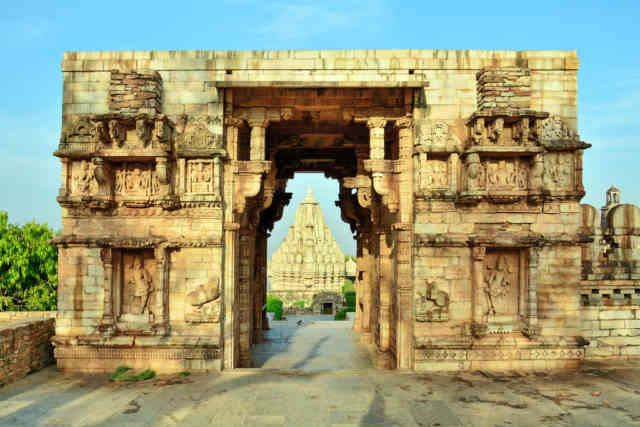He and his family, including very young children, often had to starve for days and sleep on straw spread out on the ground under the open sky; but the more they suffered, the more their will was steeled. Even in a region where war was the chief preoccupation of the rulers and the code of chivalry the sole guiding spirit, Chittaurgarh' s case stands out to inspire awe in the heart of admirer and critic alike. Indeed Chittaurgarh's extremely colourful story goes back long into the past, far beyond Rana Pratap's time, and is therefore worth narrating in some detail.
The rulers of the Mewar region of Rajasthan, with Chittaurgarh as its capital, claimed descent from the Sun. The state of Mewar came under the dominance of the Rajputs early in the 8th century.
At the beginning of the 14th century the reigning Sultan of Delhi, Allauddin Khalji, besieged Chittaurgarh, apparently to seize the beautiful queen, Padmini, the lotus-faced, word of whose beauty had reached his ears. Not succeeding, he professed to retire from Chittaurgarh if only he were allowed a glimpse of the queen. The Rajputs took the sultan at his word but agreed to let him look at her only in a mirror, to guard her chastity from being defiled by his direct carnal glance. Allauddin laid an ambush and was able to get hold of Padmini's husband whom he promised to release in exchange for her.
Seeing no way out, the condition was agreed to and Padmini set out in a veiled palanquin accompanied by “maids” in 700 similarly veiled palanquins. In reality the “maids” were some of the bravest Rajput men. At an opportune moment they threw the veils away and pounced on Allauddin's men, putting them to flight and rescuing their master, Padmini's husband.
Allauddin, however, was not one to forget the slight. He attacked the fort again with a massive force. The defenders soon realized the hopelessness of their situation. Any other group of warriors would have sued for peace; but in the Rajput code of honour there was nothing more disreputable than shying away from battle, no matter what the situation. Thus they decided on a ritual that has marked the end of many a desperate battle in Raja-sthan's history: johar. Whenever Rajput warriors realised the inevitability of defeat, they prepared to join battle and perish fighting, to the last man. Since concern for the chastity of their womenfolk was an in-separable part of their code of honour, the women would dress themselves in all their finery and sacrifice themselves in a huge fire so that their men would not have them on their minds while fighting. This was the johar which led to the destruction of Padmini and Rattan Singh, her husband, and the defeat of Chittaurgarh, though the kingdom was to become independent again in a short while.
The story, even on the face of it, has clear marks of a legend. It is of course true that Sultan Allauddin Khalji conquered Chittaurgarh early in the 14th century; the performance of johar is also a fact in Chittaurgarh's history, as in the history of several other princely states of Rajasthan. It is difficult, however, to vouch for the historical existence of Padmini; at any rate, Allauddin Khalji, one of the greatest conquerors in the history of medieval India, who gave himself the title of the second Alexander, was not known to be moved by feminine beauty in his desire for the territorial expansion of his empire. Indeed, the story of Padmini and Khalji was the creation of a mid-16th century poet. Ever since this work of poetry was composed in the popular language of the region, the story has become so much a part of folklore that its veracity seems to have become irrelevant.









